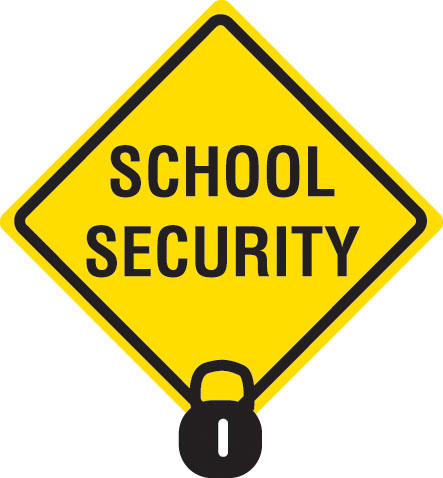 Before the Newtown shooting, I rarely thought about the mechanics of school security. On that day in December 2012, though, it was the only thing I could think about.
Before the Newtown shooting, I rarely thought about the mechanics of school security. On that day in December 2012, though, it was the only thing I could think about.
It didn’t help that my daughter, Evie, was sitting in her first grade classroom when the news began to pop up on social media.
Our country had experienced more than enough violence in schools, but never before had that type of horrific violence rocked kids that young.
In short, it was awful.
After that came the questions: What could we have done to stop it? How can we increase our schools’ security? Do we need armed guards? Security cameras? Metal detectors?
The big one for me though, was, “How do I send my child back to school without being terrified the same thing is going to happen to her?”
A couple of days later, Evie came home from school and told me that she had to practice a lockdown drill in the middle of school that day and, while it made me sad that my child now lives in a world where lockdown drills are necessary, I breathed a sigh of relief to know schools had began to take notice and steps were being made.
School Security Considerations
With not only lockdown drills to worry about, ADA code in general can get a bit confusing with so many rules and regulations to adhere to, but that is especially true in the case of educational facilities.
What may be widely acceptable in other facilities can be expressly forbidden in educational facilities. This requires the facility’s general contractor as well as the architect to work together to determine what openings are up to code, and if not, what changes need to be made to increase school security.
A large majority of the time, these types of specifications can be modified once the facility is built and the actual walls are in place. Changes can be made based on the situation (as long as it falls under code) and typically, the local fire marshal has the last word on whether a particular feature is going to fly or not.
New Possibilities
As technology progresses, more doors open up for different school security features. Facial recognition software, metal detectors, and x-ray machines to scan backpacks and bags are all widely used in schools now. There have also been several advances in lockdown features with individuals presenting possible ideas to make our schools safer.
While there isn’t a nationwide required security plan, many individual states’ Departments of Education are coming together to form a plan that will increase their schools’ security.
According to Val Gallutia, the human resources chief operating officer for the Jessamine County School Board, many of the security possibilities are strictly controlled by budget. Right now the schools are all on a key system, which grants different employees different levels of access for the interior doors. They’re also moving to key card access for all exterior doors. Like most schools, all exterior doors remain locked at all times, which is pretty standard when it comes to school security.
As for other options such as metal detectors or facial recognition scanners, they aren’t there yet. However, there are security cameras in place in all schools, and even non-educational facilities, such as the business offices, simply because they are school-related.
While they don’t have required standards across the board, the Kentucky Center for School Safety helps any schools in the state when it comes to basic guidelines and providing officials with the latest research. They also offer training and educational material to help keep those in charge up to date.
Are you involved with your community’s school security? We would love to hear from you.
